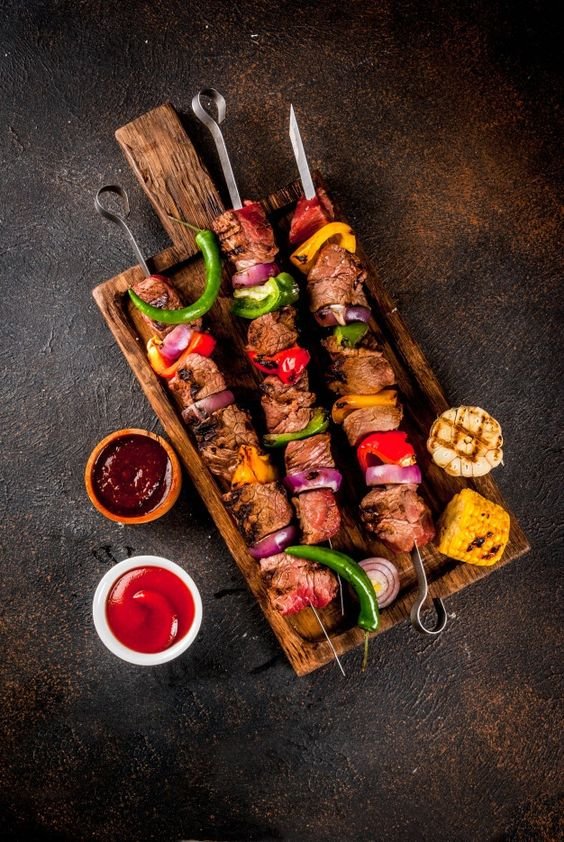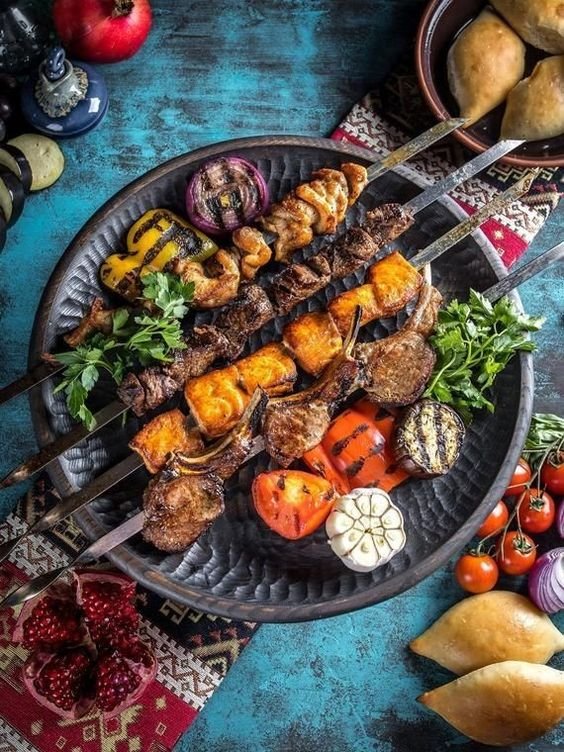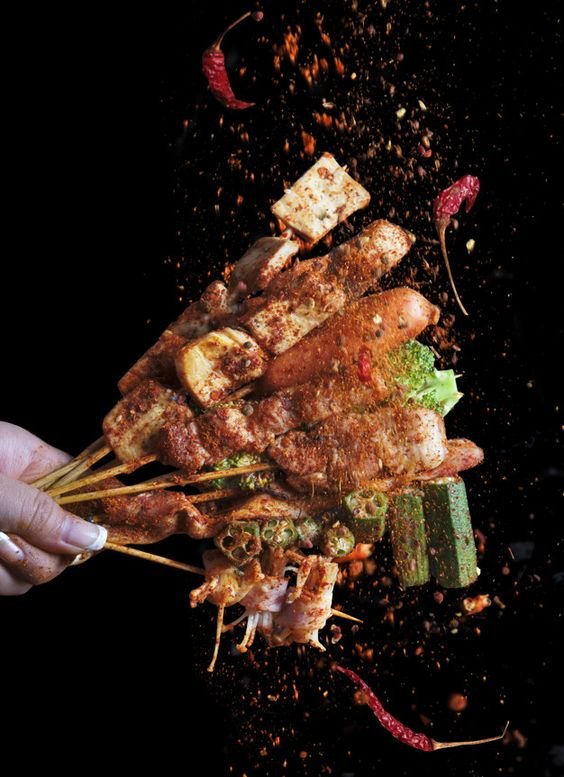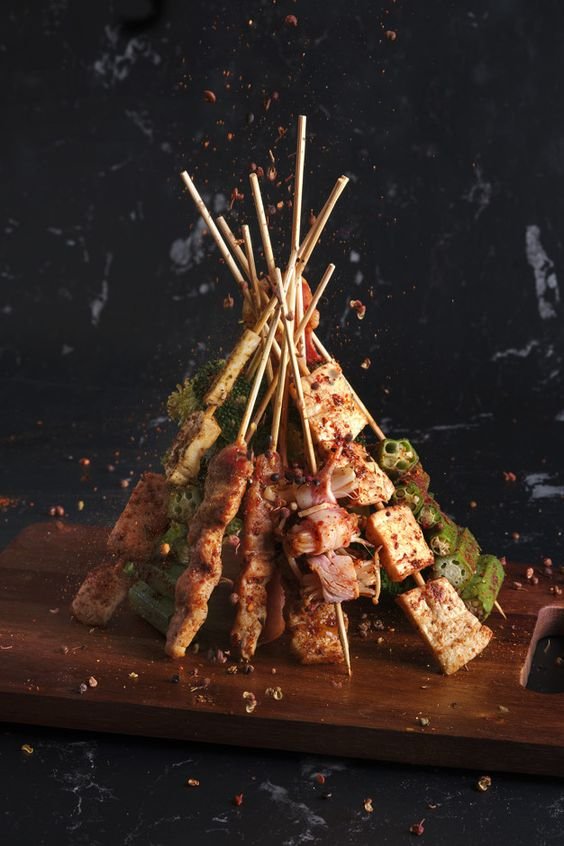From Ancient Charcoal Fires to Modern Grills: Unraveling the History and Origin of Kebabs
- Uncategorized
 historified
historified- July 25, 2023
- 0
- 301

For millennia, kebabs have delighted taste buds and brought people together in a delightful display of culinary craftsmanship. These mouthwatering skewered delights, infused with a myriad of flavors, have earned a special place in the hearts of food enthusiasts worldwide. But where did kebabs originate, and how did they evolve into the global sensation they are today? In this blog, we embark on a journey back in time to explore the fascinating history and origin of kebabs.

Ancient Beginnings
The story of kebabs traces its roots back to the earliest human civilizations. Archaeological evidence suggests that ancient cultures, including Mesopotamia, Egypt, and Persia, all had some form of skewered meat preparation. However, it was in the Middle East, particularly in what is now modern-day Iran, that the true genesis of kebabs can be found.
The term “kebab” has a Persian origin, stemming from the word “kabāb” (کباب), which translates to “roasted meat.” The Persian Empire, renowned for its rich culinary traditions, played a pivotal role in the development and dissemination of kebabs.

Persian Influence and Alexander the Great
During his conquest of the Persian Empire in the 4th century BCE, Alexander the Great and his army encountered the Persian way of cooking meat over open flames. The Greeks were intrigued and quickly adopted this technique, adding their own culinary touches. The combination of Persian and Greek influences gave rise to the gyros (or döner kebab), a variation where meat is cooked on a vertical rotisserie.
Spread Across the Silk Road
As the Silk Road flourished, so did the exchange of cultures and cuisines. Kebabs, with their portability and delicious flavors, became a popular choice among merchants and travelers alike. As traders journeyed from the Middle East to Central Asia, India, and eventually China, they carried with them the art of skewering and grilling meat. This facilitated the spread of kebabs throughout these regions, each absorbing distinct local flavors and preparation techniques.

Influences in South Asia
The Mughal Empire, which ruled over much of the Indian subcontinent from the 16th to 19th centuries, had a profound impact on the culinary landscape. The Mughals introduced Persian and Central Asian cooking techniques, including the art of making kebabs, to India. This marked the beginning of India’s love affair with kebabs. The royal kitchens of the Mughal emperors became centers of gastronomic innovation, giving rise to a diverse range of kebabs, such as the famous Seekh Kebabs, Boti Kebabs, and more.
Kebabs in the Ottoman Empire
While kebabs were making their way across Central Asia and India, they were also gaining popularity in the heart of the Ottoman Empire. The Ottomans, known for their lavish banquets and extravagant feasts, embraced kebabs as a centerpiece of their culinary heritage. Skilled chefs experimented with different meat cuts, seasonings, and cooking methods, giving rise to iconic kebabs like the Shish Kebab and Adana Kebab.

The Impact of Colonialism
With the Age of Exploration and European colonialism came the exchange of cultures and cuisines on an unprecedented scale. As European powers expanded their empires, they encountered diverse culinary traditions, including kebabs. The European fascination with these exotic delicacies spurred a trend of incorporating kebabs into their own cuisines.
Modern Era and Global Popularity
In the late 19th and early 20th centuries, immigrants from the Middle East, South Asia, and other kebab-rich regions started to migrate to different parts of the world, taking their cherished recipes with them. This migration played a crucial role in introducing kebabs to the Americas, Europe, Australia, and beyond.

The 20th century saw an explosion in the popularity of kebabs worldwide. Restaurants specializing in kebabs sprang up in major cities, and fast-food versions like the doner kebab gained immense popularity. The advent of street food culture and food trucks further fueled the global reach of kebabs.
Diverse Varieties of Kebabs
As kebabs traveled the world, they underwent fascinating transformations to cater to local tastes and available ingredients. Here are some of the most popular types of kebabs from around the world:
Shish Kebab (Turkey, Middle East): Cubes of meat, often lamb, marinated in spices, threaded onto skewers, and grilled to perfection.
Seekh Kebab (India, Pakistan, Bangladesh): Minced meat, usually lamb or beef, mixed with spices and shaped around skewers, then cooked over a grill or open flame.
Adana Kebab (Turkey): A spicy minced meat kebab, typically made from ground lamb, mixed with chili peppers and seasonings, and cooked on a flat skewer.
Doner Kebab (Turkey): Layers of seasoned meat (traditionally lamb, but sometimes chicken or beef) cooked on a vertical rotisserie, shaved and served in pita bread or flatbread.
Shashlik (Central Asia, Russia): Cubes of meat, marinated with onions and herbs, and grilled over an open flame.
Chuanr (China): A popular street food in China, chuanr consists of small pieces of skewered meat, often seasoned with cumin and chili, then grilled over charcoal.
Satay (Indonesia, Malaysia, Thailand): Skewered and grilled meat, typically served with peanut sauce.

Conclusion
From the ancient fires of Persia to the bustling streets of modern metropolises, kebabs have journeyed through time and space, capturing the hearts and palates of people worldwide. This culinary treasure, born from the ingenuity and resourcefulness of ancient civilizations, continues to unite cultures, bridging gaps between distant lands.
As we savor the rich flavors and textures of kebabs, we also celebrate the remarkable journey that has made them an enduring symbol of cross-cultural exchange and global gastronomy. So, the next time you relish a succulent kebab, remember that you’re savoring not only a delightful dish but also a piece of history that has stood the test of time.


